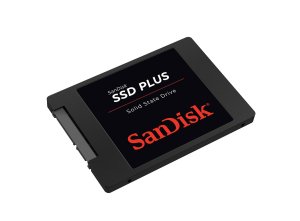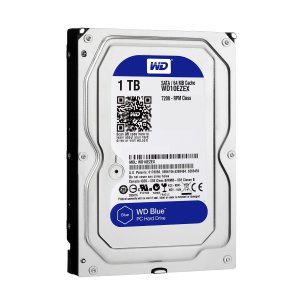One of the things people HATE about computers is how long it takes for the operating system to boot up. When a traditional hard drive has to spin and find all the data it needs, it consumes power and time to achieve this goal.
Luckily, for you, there is a solution. SSD drives, although more expensive initially, can help reduce boot times and increase productivity. The main drawback is their size in comparison to traditional HDD drive.
Before going on, I should also explain RAID 1 configurations. In the hard drive world, you can set them to work in tandem together – and in several configurations. The following list explains the 2 most common RAID configurations:
- RAID 0: This configuration between two or more hard drives writes the data across the storage units. It’s known as striping – meaning if someone were to steal a drive from your machine, they would only obtain half of the data.
- RAID 1: This uses two drives of the same size to create a backup copy. When if one of the hard drives dies, all the data is copied (we call it an image) to a second drive – meaning you just swap them out and keep going. This is one of the most common uses of RAID. The only problem is, if you get a virus on one, you get a virus on both. It does not help you if you mess up the data itself on the drive.
 I chose to use two SSD drives as my Windows 10 operating system, configured in RAID 1. This way if one had a problem or one died, I could easily switch them out and keep running. I also did the same with 2-1TB hard drives for mass storage. This way, again, if and when one dies, I can handle it and keep moving. I went with SanDisk’s Internal 120GB 2.5 inch SSD. They are probably the cheapest SSD’s you could go with without compromising reliability. They aren’t the best, but they get the job done and a lot faster than HHD.
I chose to use two SSD drives as my Windows 10 operating system, configured in RAID 1. This way if one had a problem or one died, I could easily switch them out and keep running. I also did the same with 2-1TB hard drives for mass storage. This way, again, if and when one dies, I can handle it and keep moving. I went with SanDisk’s Internal 120GB 2.5 inch SSD. They are probably the cheapest SSD’s you could go with without compromising reliability. They aren’t the best, but they get the job done and a lot faster than HHD.
 I also chose to go with WesterDigital’s Blue 1 TB drives for my mass storage. They fit well in the case and work well configured under RAID 1. I use these primarily for my gaming purposes – where read/write speed isn’t the most critical. They are great drives with a good company behind them. In hindsight, I might choose to go with a green drive instead from WD, but – meh. I don’t care too much.
I also chose to go with WesterDigital’s Blue 1 TB drives for my mass storage. They fit well in the case and work well configured under RAID 1. I use these primarily for my gaming purposes – where read/write speed isn’t the most critical. They are great drives with a good company behind them. In hindsight, I might choose to go with a green drive instead from WD, but – meh. I don’t care too much.
It should be noted that RAID 1 takes 2 hard drives of the same size and pretends like it’s one hard drive. So if I set up my 2 1-TB hard drives in RAID 1, my computer thinks that I only have 1 TB hard drive. Same with the SSD’s because it’s copying all my files that I save to both drives (like a backup).
I’d recommend these drives as options for your machine. The SSD boots up Windows 10 in 17 seconds – from dead-cold to Go. It’s awesome. I highly recommend doing that, if anything.
Next Week: Accessories.
